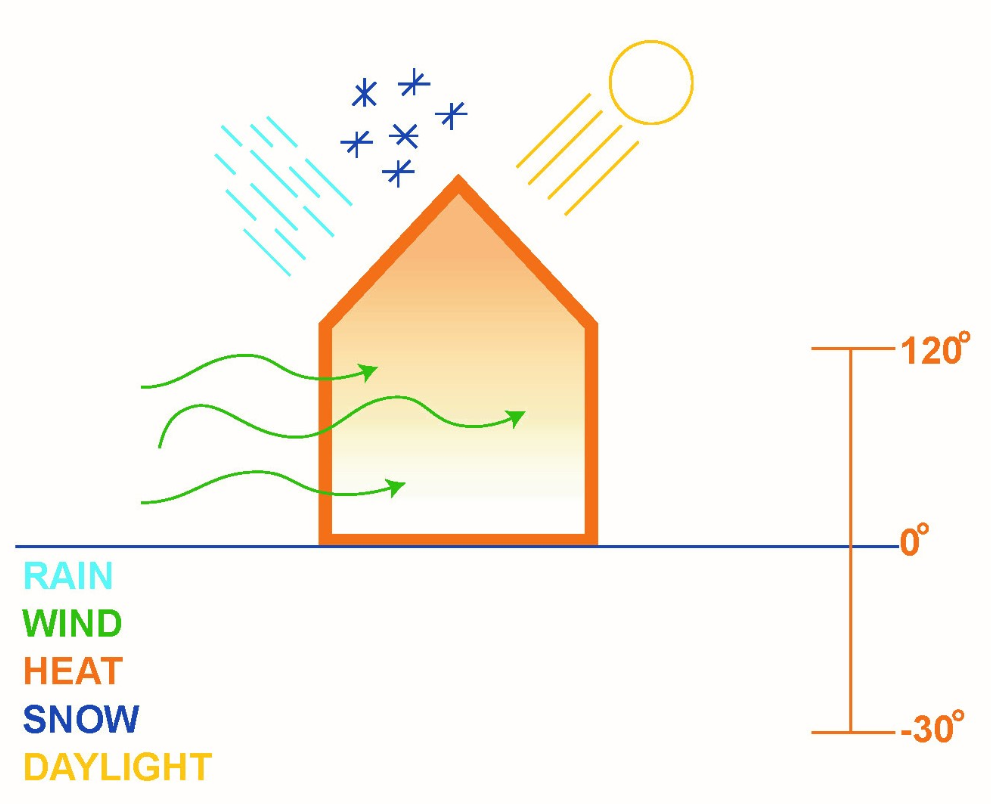"We borrow from nature the space upon which we build" - Tadao Ando
What does it mean to "Define the Design Challenge"?
The first step in the Bio-Inspired Process is to clarify the problem and design challenge. It is useful to develop a variety of possible design questions and to subdivide the exploration into a series of related investigations targeting different issues and scales. This step identifies the challenge(s), scale(s) of inquiry, and building or construction functional issue(s) the design is going to address. An exploration of function is essential in determining the scope of this step.

3.1 Step 1: Define the Problem (Design Challenge) _ Function
In the example, for the design of a cold-climate, south-facing building envelope in Minneapolis, Minnesota, we consider what the envelope design should do, achieve, and/or perform. For example, the identified “design challenge” focused on how the envelope could respond to the dynamic and dramatically changing seasons and environmental forces (extreme seasonal temperature change, humidity, solar radiation, moisture, precipitation, seasonal winds, etc.) (Figure 3). Although the environmental conditions are dynamic, most cold-climate envelopes in Minnesota are predominantly static (with non-operable windows in most commercial and institutional buildings). We asked specifically: How might the envelope design mediate between the dynamic exterior forces and dynamic interior conditions for specific envelope functions (seasonal change for heating, cooling, ventilation, lighting, views, privacy, connection to site, etc.) and performance metrics (energy, carbon, comfort, program activities, etc.)? The following steps were used to define the design challenge:
Example Step 1: Define the Design Challenge for a Cold-Climate South Facing Building Envelope
- Identify the problem: What are the design challenges of a cold-climate building envelope?
How does the envelope respond to extreme environmental conditions?
- Explore parallel questions (broad and narrow): The broader questions can be narrowed into more targeted questions: How does the envelope regulate temperatures (heat, cold, humidity, light, dynamic conditions, etc.)?